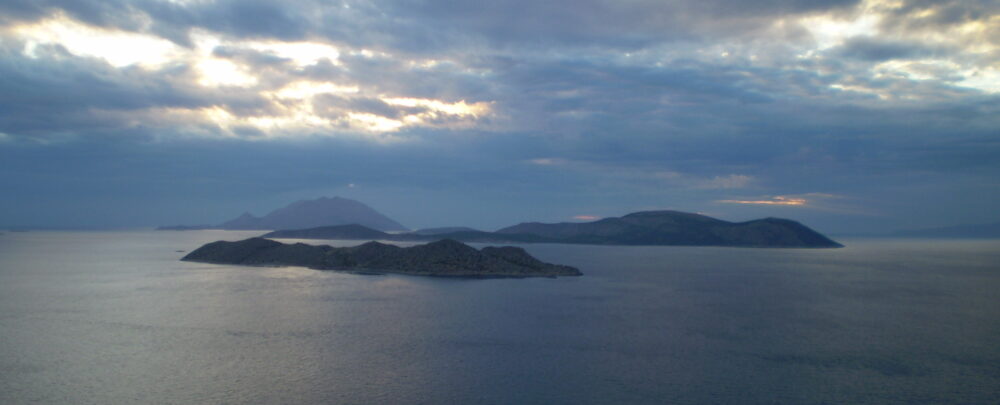Abstract
Sea-level rise is one of the most damaging consequences of climate change and is projected
to displace millions of people and cause billions of dollars in economic losses by 2100. Robust
estimates of the rate of sea-level rise are crucial to risk assessments, and thus, to the design
of risk-reducing strategies for sea-level rise. However, obtaining such estimates remains a
major scientific challenge, particularly in coastal areas where they are needed most. Despite
remarkable progress in understanding the causes of global and regional sea-level rise, we still
do not fully understand how coastal sea-level changes relate to open-ocean forcing. It is widely
recognized that coastal sea level can fluctuate coherently over large distances along the coast
and be decoupled from changes in the nearby open ocean. Numerical simulations suggest
that this phenomenon is closely tied to boundary waves. If wave decay is weak, this would
both enhance alongshore coherence and restrict the transmission of oceanic signals towards
the coast. Yet differences in observed sea-level trends between the coast and the open ocean
are inconclusive in this respect and often inconsistent across studies. Despite the expectation
that the continental slope can act to insulate the coastal zone from open-ocean changes, we
do not understand exactly how, where, and to what extent, this happens.
The two key gaps in our knowledge are: (1) the extent to which open-ocean changes affect
coastal sea level and (2) how this relates to alongshore coherence. Tide gauges provide sea-level
measurements right at the coast but not on the continental shelf and they are spatially
sparse. Satellite altimetry provides observations at ungauged locations and also on the shelf
and in the open ocean, but such observations tend to be unreliable within about 20 km from
the coast due to land contamination of the altimeter signal.
This ISSI project addresses these knowledge gaps through new coastal altimetry observations
that leverage recent advances in processing and technology to improve the quality of the
coastal observations.
Summary of project outcomes
This project provides new insights into the extent to which open-ocean changes affect coastal sea level and how this relates to alongshore sea-level coherence. This has been achieved by analysing observations from coastal altimetry and tide gauges together with targeted model simulations. Our work centred primarily around two broad themes: 1) investigation of the processes of sea-level variability on the North West European Shelf (NWES), distinguishing between local and remote forcing; and 2) characterization of coherent modes of global coastal sea-level variability.
In theme 1, we ran experiments in a regional ocean model with the aim of isolating sources of variability. We found that both local wind and remote forcing are important for explaining the sea-level variability on the NWES. Local winds drive water onto the shelf through a combination of surface Ekman, bottom Ekman and geostrophic flows. The geostrophic flow is closely related to wind stress with a flow about half that of surface Ekman transport but in the opposite direction. Remote forcing produces a sea-level mode which is almost uniform over the shelf and results mostly from mass-fluxes of geostrophic nature onto the shelf. This mode of variability is sensitive to oceanic changes occurring at lower latitudes and which travel northward along the shelfedge. The local wind dominated mode and the remote mode, which is correlated with remote winds, form part of a larger North Atlantic Eastern Boundary mode extending from north Africa to the Arctic Ocean.
In theme 2, we used a Bayesian Mixture Model to identify large-scale patterns of coherent modes of coastal sea level variability based on data from tide gauges and coastal altimetry. We found that much of the observed variability can be described by a relatively small number of cluster time series, and thus be attributed to a set of common drivers. While some clusters (e.g., the Western tropical Pacific) are highly correlated with climate modes, many others share very little variability with the considered climate modes. This suggests that, in many regions, coastal variability is decoupled from the adjacent deep ocean. The knowledge of the predominant modes of variability is essential for understanding the (de-)coupling of coastal and open-ocean variability, and may lead to better estimates of future coastal sea-level change.

